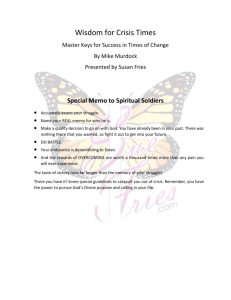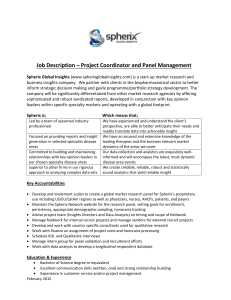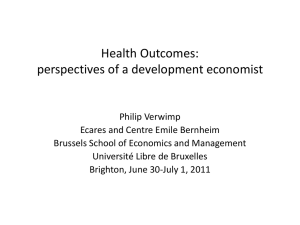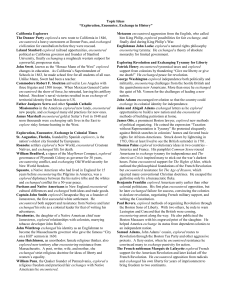Four Word Build - Shasta College
advertisement
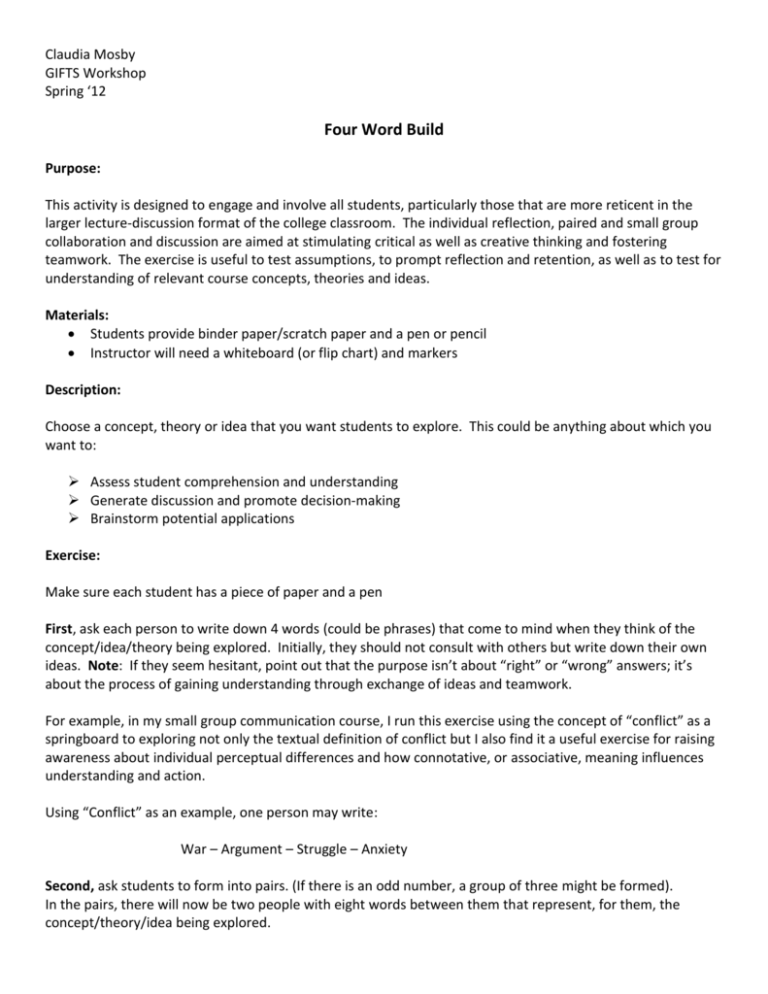
Claudia Mosby GIFTS Workshop Spring ‘12 Four Word Build Purpose: This activity is designed to engage and involve all students, particularly those that are more reticent in the larger lecture-discussion format of the college classroom. The individual reflection, paired and small group collaboration and discussion are aimed at stimulating critical as well as creative thinking and fostering teamwork. The exercise is useful to test assumptions, to prompt reflection and retention, as well as to test for understanding of relevant course concepts, theories and ideas. Materials: Students provide binder paper/scratch paper and a pen or pencil Instructor will need a whiteboard (or flip chart) and markers Description: Choose a concept, theory or idea that you want students to explore. This could be anything about which you want to: Assess student comprehension and understanding Generate discussion and promote decision-making Brainstorm potential applications Exercise: Make sure each student has a piece of paper and a pen First, ask each person to write down 4 words (could be phrases) that come to mind when they think of the concept/idea/theory being explored. Initially, they should not consult with others but write down their own ideas. Note: If they seem hesitant, point out that the purpose isn’t about “right” or “wrong” answers; it’s about the process of gaining understanding through exchange of ideas and teamwork. For example, in my small group communication course, I run this exercise using the concept of “conflict” as a springboard to exploring not only the textual definition of conflict but I also find it a useful exercise for raising awareness about individual perceptual differences and how connotative, or associative, meaning influences understanding and action. Using “Conflict” as an example, one person may write: War – Argument – Struggle – Anxiety Second, ask students to form into pairs. (If there is an odd number, a group of three might be formed). In the pairs, there will now be two people with eight words between them that represent, for them, the concept/theory/idea being explored. Ask them to agree on four words to keep from the original eight words. This means they will have to eliminate four words. This can lead to much discussion about the words and the reasons why they chose them. Engaging in this exchange helps each understand the other’s reasons for the words they chose and how each understands the original concept, theory or idea. Their decision to keep or eliminate a word will need some form of decision making and the means by which this happens can, in itself, be of interest as a meta-analysis later in the exercise. For example, with “Conflict,” the two people may have chosen: War – Argument – Struggle – Anxiety And Anger – Difference – Change – Struggle And they agree on Anger – Difference – Struggle – Argument So now the pair has “their” four words for the concept being explored. (Note: in the case of a group of three, they will have reduced their original twelve words down to four). Next, ask each pair to join with another pair and do the same thing. Now, there will be groups of four people discussing eight words (two people with four words + two people with four words = four people with eight words). Again, if the numbers don’t quite work, you can create different sized groups. This further discussion of the original word, this time with each pair bringing their learning and insights from their own discussion, creates even deeper exploration of the concept/theory/idea. The outcome of this will be groups of four with their group’s four words to represent the topic being explored. *While this process can obviously continue again and again, I usually stop it after this third combining round in order to review and debrief. Processing: Put the original concept/theory on the whiteboard or a flip chart. Solicit contributions from each group, noting with an asterisk or check mark repeated words. I usually ask the following series of questions when I run this activity on the concept of “Conflict,” but other questions can be added depending on the topic being explored and the purpose for running the exercise: How greatly does this list differ from/compare with your initial individual list? Why do you think this is so? What observations do you have about the final list of words generated? What new insights, if any, into the original concept/theory/idea did you gain through participating in this exercise? What do the differing views, understandings and assumptions we each have about the chosen concept/theory/idea perhaps reveal? What, if anything, did you learn from doing this exercise? The group will already have had a rich discussion of the concept/theory/idea the exercise is exploring, but now they can see where they arrived in their understanding as a group. This is likely to have led to various insights for many and sharing those insights in a group is likely to increase this. Depending on the original intention for exploring the concept/theory/idea, this exercise can lead to: A wider understanding of that concept/theory or idea Real world applications of (an abstract) concept/theory Meta-Analysis (e.g., communication, gender, social or psychological typologies, etc.) Another useful aspects of this exercise, referred to earlier, is that it offers an opportunity for a meta-analysis of the process students used to come to the decisions in their pairs or groups with regard to which words to keep and which ones to drop. This can lead to insights into how each person present took part in the process of the decision making, irrespective of the concept/theory/idea. Questions such as the following may yield an interesting metaanalysis for courses concerned with gender, communication, history, psychology, etc. Were they passive in one group and more active in another? Did they try to “dominate” the discussion and decision reached? Did they take into account the contributions of others? Did they feel listened to in their group? Were there differences in the way males versus females participated? What other ideas do you have for expanding upon this activity to make it relevant to your own course?
